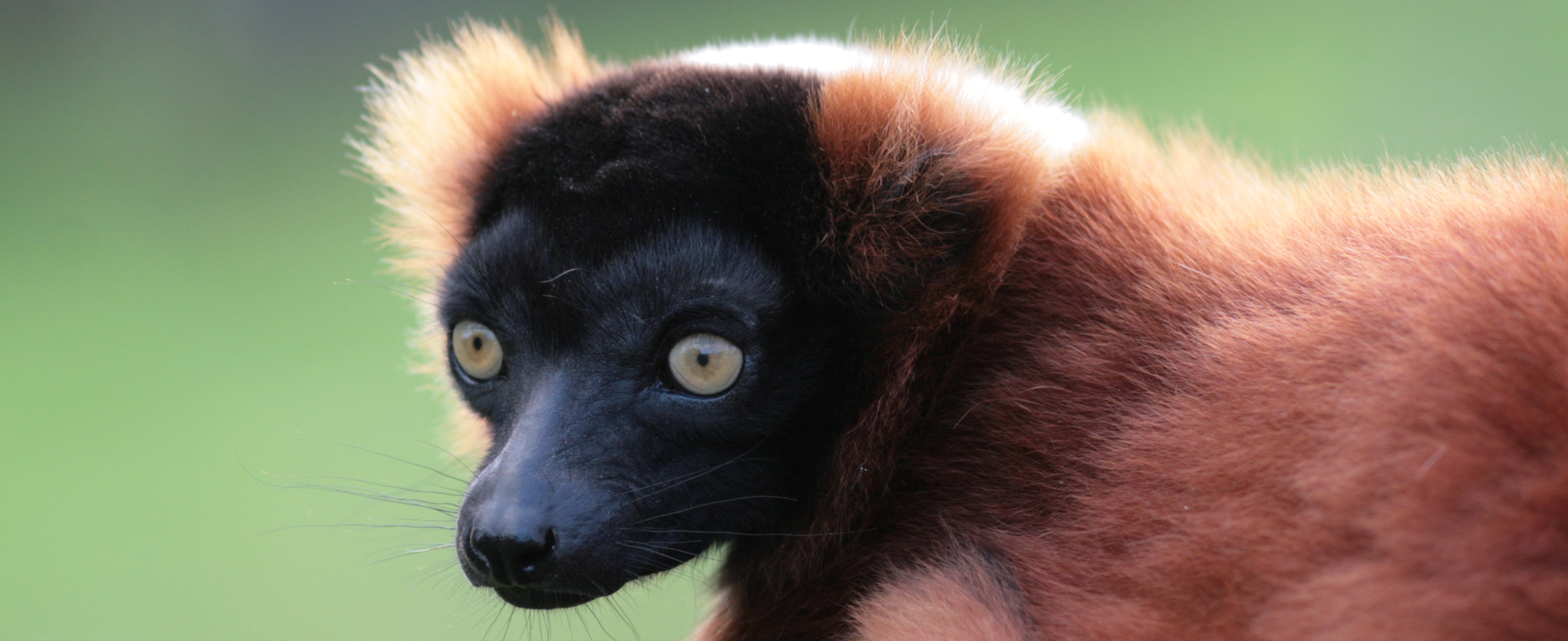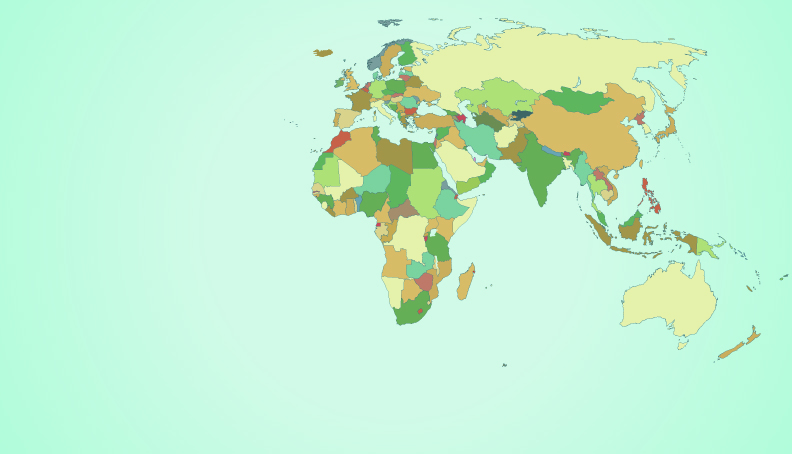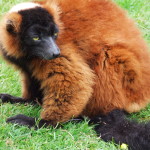Red Ruffed Lemur
Varecia variehata rubra
Habitat: Primary rainforest. Ruffed Lemurs are only found in undisturbed primary forest.
Threats: They are one of the first species to disappear after selective logging, probably because they eat large fruits from large trees, which are the first to be cut down. Due to its large size and need for tall primary forest, this species is susceptible to human encroachment and habitat loss. Hunting also remains a threat.
Social Behaviour: They live in variable multi-male / multi-female communities and they are very territorial.Active during the day it prefers high forest and is often observed in the crowns of large feeding trees. They are very arboreal and daytime active, they often like to hang upside down by their feet to feed.The extreme loud barking is to ward off other lemurs.
Information: This species has a restricted range, primarily inhabiting primary forests of the Masoala Peninsula and the region north of the Bay of Antongil in north-eastern Madagascar. The Antainambalana River separates this species from V. variegata. Historically, the two species overlapped in the region. This species is named after the thick red coat which it possesses especially the thick tufts on its ears.
Food: The diet consists of fruit, seeds, leaves and nectar. They can pass seeds in 2-3 hours.
Breeding: They reach maturity at twenty months and have a gestation period of 90 to 120 days. They give birth every 12 months in spring to twins.
Ruffed lemurs are the largest lemur to have three pairs of nipples and multiple infants. Young are parked in nests for the first week and rather than clinging, are carried in the mothers mouth.
Map: Red = Locations Found 823






